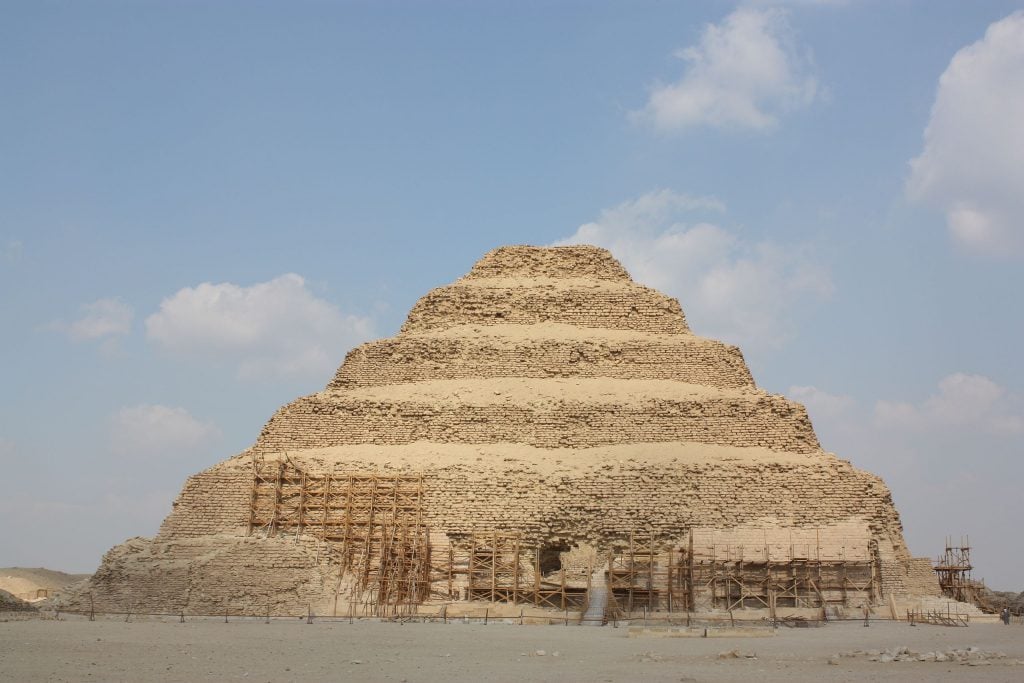Art & Exhibitions
Did Inept Restorers Damage Egypt’s Oldest Pyramid?


Sarah Cascone

The Egyptian government is denying claims the Djoser pyramid, the country’s oldest, has been damaged by the inept restoration efforts of an unqualified company, the AFP reports.
“You have seen the inside of the pyramid. It has not been destroyed; it is not in danger,” said Mamdouh al-Damati, the country’s antiquities minister, to a group of journalists who had just visited the site, which dates to the 27th century BCE. “Restoration work is underway without a problem,” he added, although the underfunded project, which began in 2006, has been suspended since last year.
The tour of the pyramid had been arranged and the press conference had been called to ensure that reporters did not spread “rumors.” Antiquities restoration expert Marwa al-Zeiny is claiming that Al-Shurbagy, the company in charge of the restoration project, is inexperienced in this line of work.
al-Zeiny also questions the quality of the restoration efforts that have been completed to date, telling the AFP that “there is an enormous visual difference between” the untouched and restored areas of the tomb. “The part that has been restored gives the impression of being a new pyramid, which contravenes all international norms,” she added.
There seems to be a difference of opinion on whether that is a problem, as Al-Shurbagy’s project manager, Michel Farid Ghobrial, is proud that the company’s efforts thus far “gives the pyramid the appearance it would have had when it was first built.”
Undeterred, al-Zeiny is calling for a committee of independent international experts to review the project in order to determine whether the pyramid “is in danger or not.”
Named for the Pharaoh Djoser and built by his master architect Imhotep, the ancient structure is part of the Saqqara necropolis near Cairo. Originally 203 feet tall, the step pyramid has six stacked mastabas, rather than the more iconic smooth sides commonly associated with Egyptian architecture.